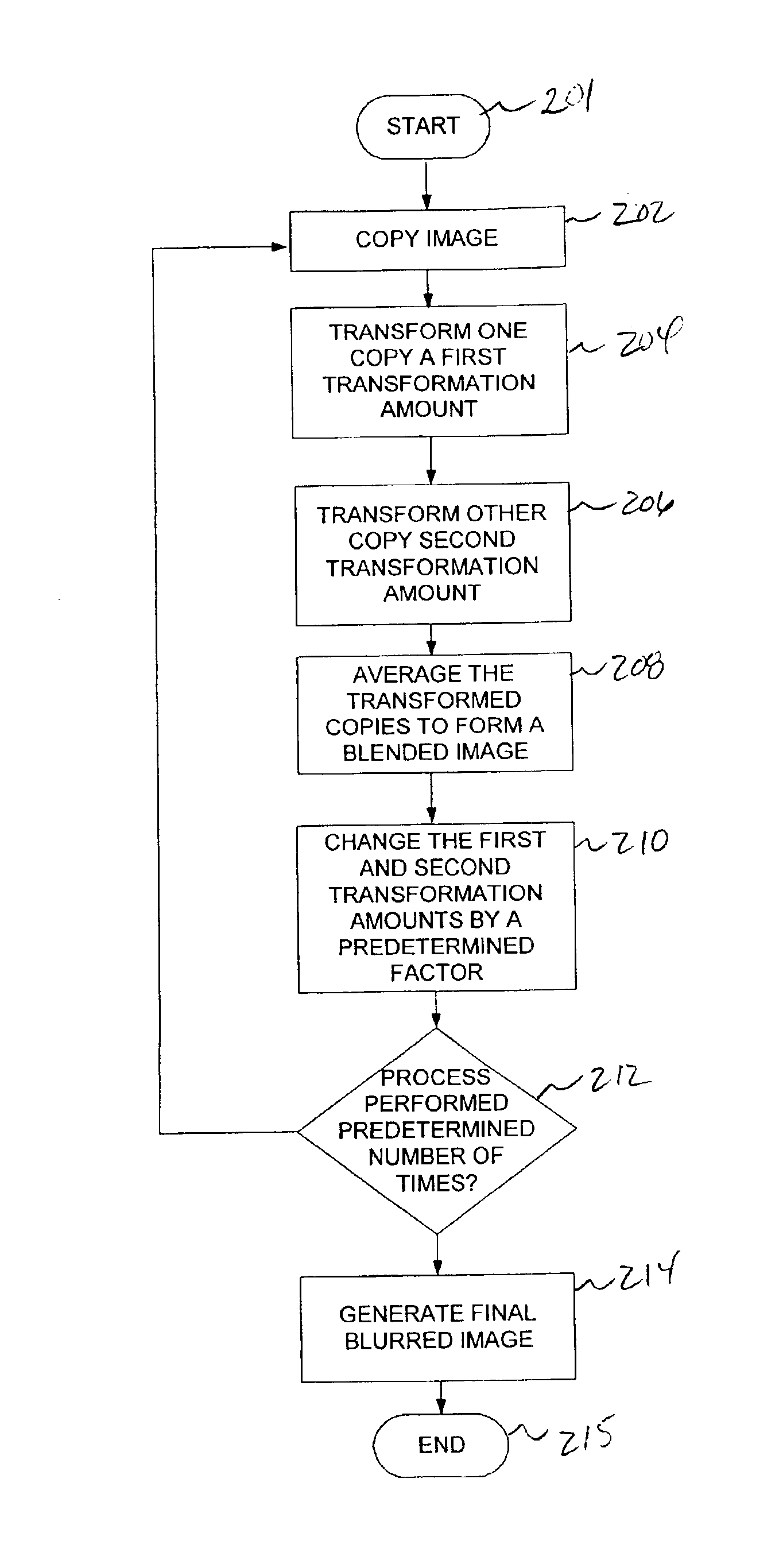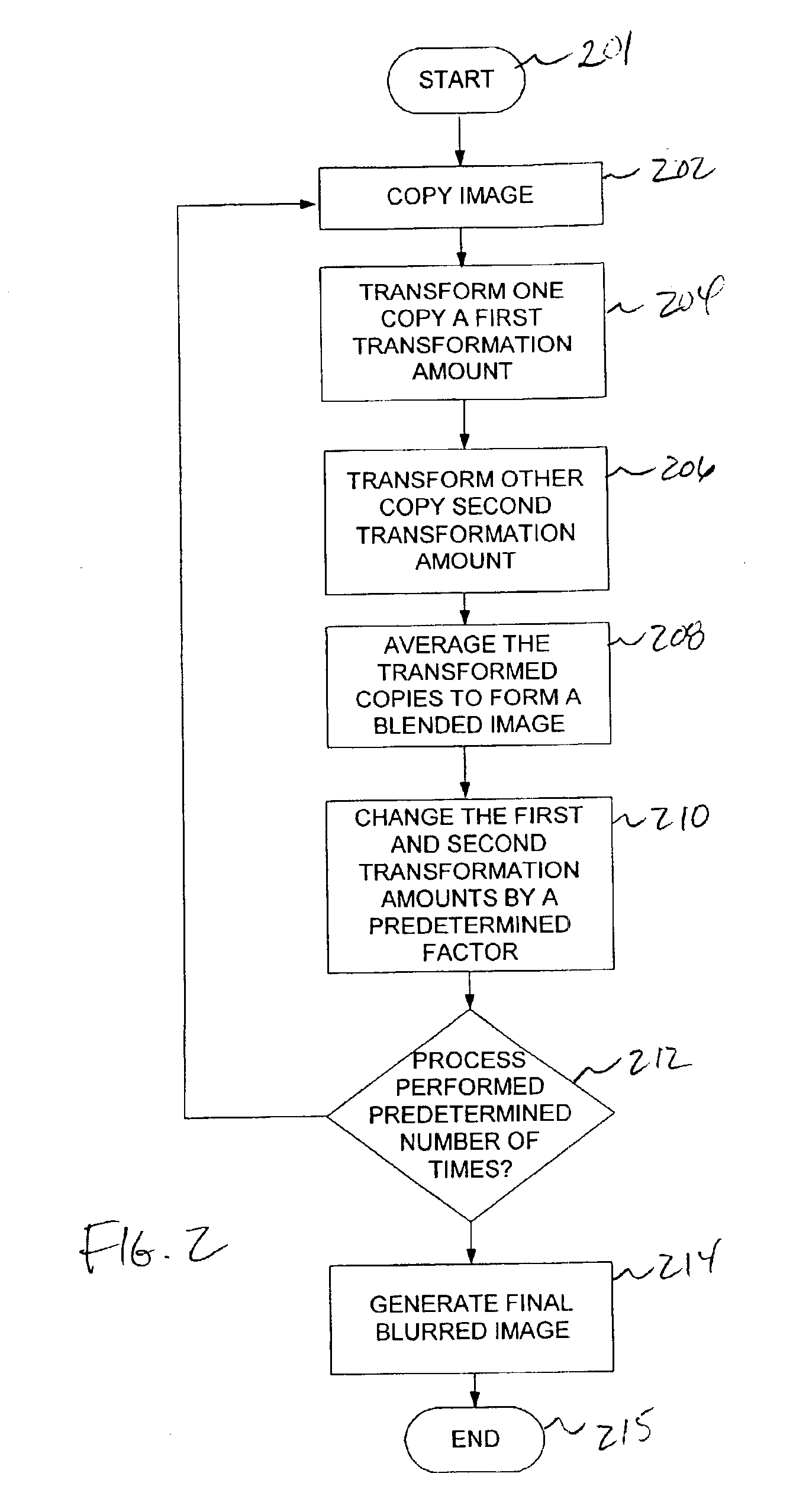Method for blurring images in real-time
a real-time, blurring technology, applied in the field of image processing, can solve the problems of high computational intensity of the technique, rarely fast enough to be computed in real-time at the high resolution desired for many applications, and the above-noted traditional software blurring technique may not be directly implemented in graphics hardwar
- Summary
- Abstract
- Description
- Claims
- Application Information
AI Technical Summary
Benefits of technology
Problems solved by technology
Method used
Image
Examples
Embodiment Construction
[0021]The image blurring methods of the present invention may be implemented using a computer system, such as the one depicted schematically in FIG. 1. The computer system 100 includes, among other things, a processor 102, random access memory (RAM) 104, a hard drive 106, and a graphics hardware device 108. The computer system 100 may also include input / output (I / O) devices, such as a video display unit 110, a keyboard 112, and a mouse 114. The RAM 104 is programmed to cause the processor 102 and graphics hardware device 108 to perform the image blurring methods of the present invention and to display the results of the method on the video display unit 110. The processor 102 may be any one of numerous known processor devices known in the art including, but not limited to, the Pentium family of processors available from Intel Corporation, and the Athlon family of processors available from Advanced Micro Devices, Incorporated. The graphics hardware device 108 may be any one of numerou...
PUM
 Login to View More
Login to View More Abstract
Description
Claims
Application Information
 Login to View More
Login to View More - R&D
- Intellectual Property
- Life Sciences
- Materials
- Tech Scout
- Unparalleled Data Quality
- Higher Quality Content
- 60% Fewer Hallucinations
Browse by: Latest US Patents, China's latest patents, Technical Efficacy Thesaurus, Application Domain, Technology Topic, Popular Technical Reports.
© 2025 PatSnap. All rights reserved.Legal|Privacy policy|Modern Slavery Act Transparency Statement|Sitemap|About US| Contact US: help@patsnap.com



